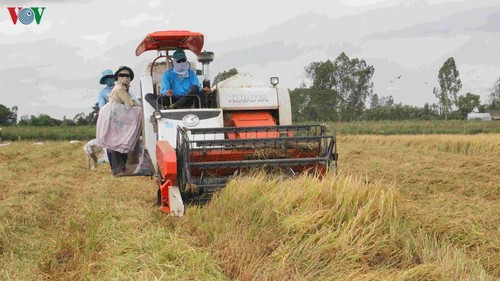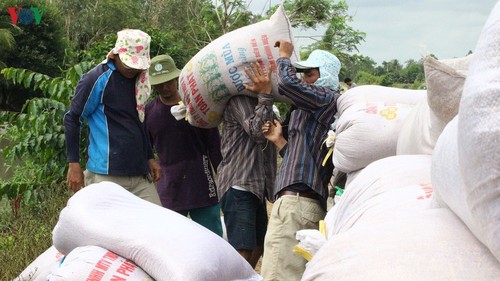 The Mekong Delta has more than 3.2 million hectares of rice farmland. The Mekong Delta has more than 3.2 million hectares of rice farmland. |
Phan Thien Khanh, a farmer in Dinh Mon commune in Can Tho city, has used high quality rice varieties on his family’s 1.7-hectare rice farm.
He and 17 other farmers who belong to a rice production cooperative, are well aware that they need to maintain productivity to stabilize their lives and ensure food security.
“Local farmers used to grow the rice variety IR50404. Since they changed to newer higher-quality pest-resistant varieties, pesticide costs are lower and rice prices are more stable,” said Khanh.
In recent years, Can Tho’s agriculture sector has restructured production and switched to crops and animal husbandry better suited to the ecological conditions of each region. The local agriculture sector helps farmers choose high-quality varieties that maximize profitability.
Pham Truong Yen, Deputy Director of the municipal Department of Agriculture, said: “To ensure the areas for rice cultivation and food security, the local agricultural sector has restructured livestock and crops.”
“Areas inefficient at rice farming are told to switch to other crops or aquaculture. The sector will closely monitor the transition. Can Tho targets an annual output of 1.3-1.4 million tons of unhusked rice," Yen explained.
 The region has a good winter-spring rice harvest this year in both productivity and price. The region has a good winter-spring rice harvest this year in both productivity and price. |
Dr. Tran Ngoc Thach, Director of the Mekong Delta Rice Research Institute, said the agency has cross-bred more than 180 rice varieties to match the needs of different parts of the region.
The delta’s 3.2 million hectares of rice farmland produces between 24 and 25 million tons of unhusked rice a year.
But the delta is greatly challenged by climate change, drought, and saltwater intrusion forcing localities to re-plan production areas, increase links among regions and sub-regions, and outline solutions appropriate to the current stage of development.
According to Thach, “High-risk areas need to grow other crops or do aquaculture. Areas with the greatest potential for rice cultivation should strictly follow the timetables for each crop. Depending on the recommendations for each locality, we must take advantage of fresh water sources to plant the crops most suited to each region.”
The Mekong Delta’s agriculture sector is focused on restructuring production, improving value chains, mechanizing production, and applying technology to meet domestic demands and exports.